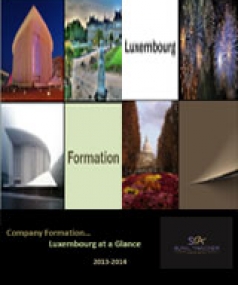India: Defenses against the charge of Forgery
Introduction
We have all heard of the saying that imitation is the best form of flattery; however, when it results in damage or injury to the public or an individual, it becomes punishable under law. One such example is that of Forgery. Forgery is defined under Section 463 of the Indian Penal Code as,
"Whosoever makes any fake document or incorrect electronic record or part of a document to cause damage or injury, to the public or any person, or to support any claim or title, or to cause any person to share with property, or to enter into any express or implied contract, or with a purpose to commit fraud or that fraud may be accomplished, commits forgery."
Forgery is often used by white-collar criminals to materialize corporate frauds and scams that result in significant losses to individuals and governments. Forging documents is particularly common; crimes such as misappropriation of funds, embezzlement, cheating, etc., typically result from forged documents. Besides forging documents, Forgery can occur in signatures, prescriptions, artwork, literary material, and so on.
The concept of Forgery essentially has three elements, namely, material alteration, intention to defraud, and ability to defraud.
- Material alteration- The document in possession of the person must be altered so that it has a significant effect on its legal implications.
- Intention to defraud- A common ground for conviction under criminal law is intention. Therefore, the perpetrator of the crime must have an intention to falsify a genuine document.
- Ability to defraud- The forged document must appear so genuine that it can mislead most people into believing its genuineness.
Forgery, therefore, constitutes deception intending to cause larceny. For example, a person does not become liable merely because he has copied someone's art; liability is only imposed on him for copying the art if he sells it and gains some monetary benefit out of it, which in turn causes damage to the original artists, both in reputation and monetary terms.
Illustrations
- A writes and issues a check in the name of B for Rs. 20,000. B, to defraud A, slyly adds another zero, making the amount 200,000. In this case, B has fraudulently filled up a cheque, therefore, defrauding A by Forgery.
- A writes a will and hands it over to his executor to execute. Executor B makes some material changes without A's consent in such a way that it would benefit him. These material changes constitute Forgery.
The Indian Penal Code provides a long list of safeguards to any person who has been victimized through Forgery; the relevant sections of the IPC that can be relied on to bring action against Forgery are as follows;
- Section 120B - Punishment of criminal conspiracy
- Section 407 - Criminal breach of trust by carrier, etc.
- Section 408 - Criminal breach of trust by clerk or servant
- Section 417- Punishment for cheating
- Section 418 - Cheating with knowledge that wrongful loss may ensue to person whose interest offender is bound to protect
- Section 420- Cheating and dishonestly inducing delivery of property
- Section 463 - Forgery
- Section 465 - Punishment for Forgery
- Section 467 - Forgery of valuable security, will, etc.
- Section 468 - Forgery for cheating
- Section 469 - Forgery to harm reputation
- Section 470 - Forged document or electronic record
- Section 471 - Using as genuine a forged document or electronic record
- Section 472 - Making or possessing counterfeit seal, etc., with intent to commit forgery punishable under section 467
- Section 473 - Making or possessing counterfeit seal, etc., with intent to commit Forgery punishable otherwise
- Section 489(A-E)- Tampering with property mark with intent to cause injury
The punishment for Forgery is laid down under Section 465 of the IPC. The offenses under this are non-cognizable, non-compoundable, bailable, and triable by a Magistrate.
Defenses against the charge of Forgery
Case Laws
Sheila Sebastian Vs. Jawaharaj AIR 2018 SC 2434 (supra)
This case was with regards to the strict interpretation of the provision of Forgery. For the sake of clarity, we shall refer to the Accused number 1 as A and Accused number 2 as B. In this case, A obtained the help of another person to procure a power of attorney in his name; through the POA he executed a mortgage deed in the name of B. The deed was signed by A. A had also affixed his signature thereon. Therefore, the questions that arose here were;
- Whether A’s actions were enough to constitute an offense under Section 464 of IPC
- Interpretation of Section 464; would the actions of A amount to making a false document.
The two-judge bench of the Supreme Court held that "for constituting an offense under Section 464 it is imperative that a false document is made and the accused person is the maker of the same; otherwise the accused person is not liable for the offense of forgery". Therefore, an accused was required to be part of the act to be held liable under this provision; if a person has not physically engaged in making the document and has merely caused the document to be made, he cannot be held liable.
A thorough reading of this judgment, however, raises a fundamental question. Section 464 uses the words "either by himself or by any other person," so if the provision were to be applied strictly, A and B would both be held liable for the offense. Therefore, the judges have taken a more colloquial approach in its interpretation instead of strictly interpreting the provision.
Upon analysis of this case, one can deduce that the crux of Forgery is the making of a false document. The judgment also clarifies the difference between cheating and Forgery; cheating is oral, and Forgery is written. Further, the IPC covers those acts of Forgery that are accompanied by other elements such as deception and injury.
Md Ibrahim Vs. State of Bihar (2009) 8 SCC 751
In this case, A was the title holder of land; B did not have any title over a piece of land but claimed to be the owner of the said land. Therefore, he went ahead and executed two registered sales deeds in favor of C. B with the help of some others, managed to forge and stamp the sales deed. The court herein observed that a person is said to have made a false document if;
- He made or executed a document claiming to be someone else or authorized by someone else.
- He altered or tampered with the document.
- He procured the document by deception or from someone not in control of their senses.
The Apex court thought that (b) and (c) do not apply in the case. Therefore, they differentiated between a person executing the sales deed claiming to be the owner of the property and a person impersonating the owner and falsely claiming to be authorized under him and held that Forgery under the IPC deals with the latter. Therefore, the matter was dismissed because the accused did not impersonate the land's original owner but claimed ownership thereof.
Mir Naqvi Askari Vs Central Bureau of Investigation (2009) 15 SCC 643
This case involved abuse of a position of power by bank officials to serve as a pecuniary advantage to some other person. The apex court, in this case, asserted that the intention to create and falsify a document is a crucial aspect in determining liability under Section 464. The court further said that the documents in question in the present matter, despite being made dishonestly, were not made to cause another person to believe that it was made by or under someone else's authority.
The Supreme Court held that three conditions are to be satisfied for a person to be liable for falsifying a document; therefore, he may be held liable if he satisfies any of the following;
- Intention
- Without lawful authority
- Mental capacity
Guru Bipin Singh Vs. Chongtham Manohar Singh 1996 (11) SCC 622
Another aspect of interpretation of provisions of Forgery was discussed in this case. Section 468 IPC talks about a more aggravated form of Forgery that involves an additional ingredient, i.e., the presence of a "purpose of cheating," being at a higher degree, this attracts a sentence of 7 years imprisonment. In this matter, the apex court held that Forgery is the principal allegation and cheating is just the consequence. Therefore, if Forgery is not applicable, consequently, cheating also does not stand.
As a general principle, a forged document is not necessarily supposed to be complete to constitute Forgery. However, if a document has not been signed, and the perpetrator has been caught beforehand, the document cannot be treated like a forged document since it was still in the initial stages of preparation. Once the perpetrator has gone beyond the preparation stage, it may be considered to be an attempt to forge. The rationale behind this is that the law holds a person liable for the act committed, not the guilty intention, though intention also plays a crucial part in determining the accused's liability.
Conclusion
All in all, upon reading the cases mentioned above, one can deduce that Forgery ultimately boils down to the accused's intention. The burden to prove damage or injury lies with the prosecution. The main element that needs to be proved is that the intention of the accused to defraud the victim was beyond a reasonable doubt.
Most defense attorneys in cases of Forgery depend on the lack of proof of Forgery. The general argument is that merely being a beneficiary to the act cannot hold a person responsible for the crime; it cannot be a presumption of guilt. In the cases mentioned above, the Supreme Court thought that suspicion could not replace actual proof.
In criminal law, the principle of a strict interpretation of proof is followed. The imposition of this restriction is that if the court is allowed to give a broader meaning to the statute, the result will be counteractive, making it unfair to the person being convicted or vice versa. A narrow construction further restricts dilution of the actual intention of the statute.
 Русский
Русский
 English
English 官话
官话 português
português عربي
عربي
 Türk
Türk 






.jpg)


























